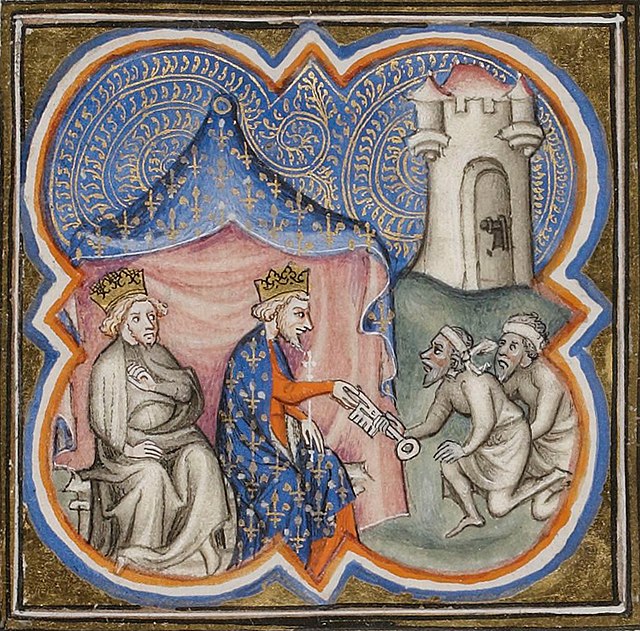William Longespée, 3rd Earl of Salisbury
William Longespée, 3rd Earl of Salisbury was an Anglo-Norman nobleman, primarily remembered for his command of the English forces at the Battle of Damme and for remaining loyal to his half-brother, King John. His nickname "Longespée" is generally taken as a reference to his great physical height and the oversized weapons that he used.
Drawing of effigy of William Longespée from his monument in Salisbury Cathedral
Geoffrey Plantagenet, Count of Anjou, paternal grandfather of William Longespée, displaying on his shield proto-heraldic arms of Azure, six lions rampant or, 3,2,1, the same arms shown on Longespée's shield in Salisbury Cathedral. Enamel from his tomb in Le Mans Cathedral
Tomb of William Longespée in Salisbury Cathedral
John was the king of England from 1199 until his death in 1216. He lost the Duchy of Normandy and most of his other French lands to King Philip II of France, resulting in the collapse of the Angevin Empire and contributing to the subsequent growth in power of the French Capetian dynasty during the 13th century. The baronial revolt at the end of John's reign led to the sealing of Magna Carta, a document considered an early step in the evolution of the constitution of the United Kingdom.
Tomb effigy, Worcester Cathedral
John's parents, Henry II and Eleanor, holding court
13th-century depiction of Henry II and his legitimate children, left to right: William, Henry, Richard, Matilda, Geoffrey, Eleanor, Joan and John
Richard I (left) and Philip II Augustus at Acre during the Third Crusade







